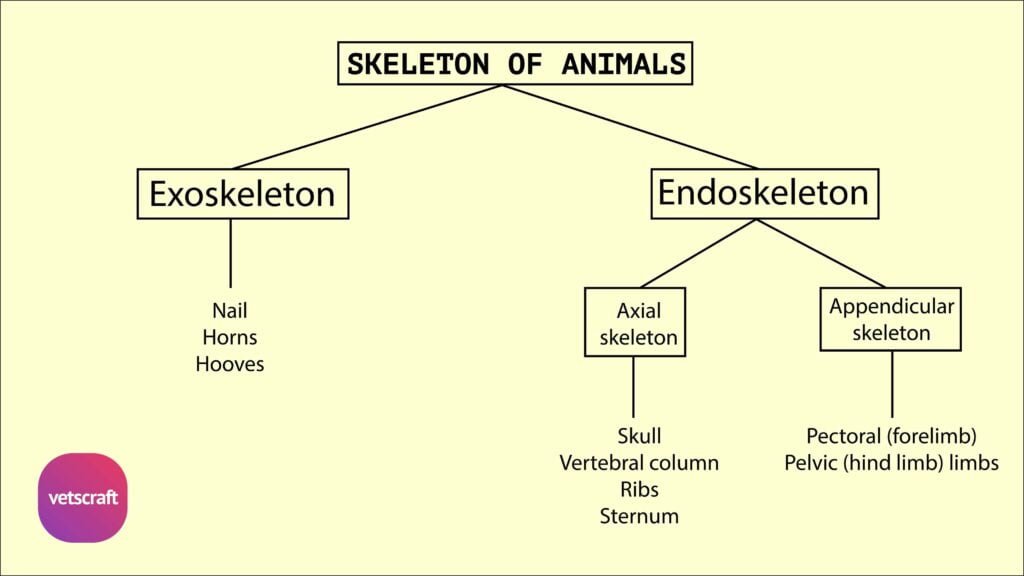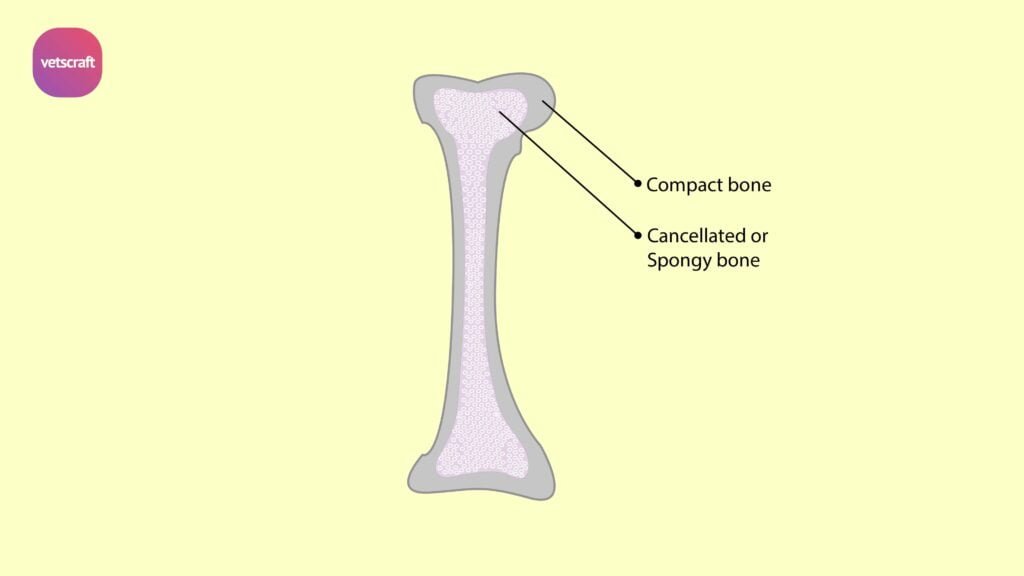TABLE OF CONTENTS
Anatomy of Coccygeal Vertebrae in Animals
The coccygeal vertebrae, also known as caudal or tail vertebrae, form the terminal portion of the vertebral column in animals.
Typically, these vertebrae become progressively smaller toward the tip of the tail, with the posterior ones often reduced to simple bony cylinders.

Anatomy of Coccygeal Vertebrae in Ox
The coccygeal vertebrae vary considerably in number, from 18 to 20 in ox. These gradually diminish in size from the first to the last.
The first five or six are typical vertebrae, but beyond the sixth, the processes and the arches are gradually suppressed so that the posterior ones are made up of bodies only.
The transverse processes are relatively large. The ventral surface presents a pair of processes—the haemal processes—and between these is a groove, the sulcus vasculosus, for the middle coccygeal artery.
The articular processes do not carry facets. The arch disappears from the sixth backwards, and the rudiments of the transverse processes disappear after the ninth or tenth.
Comparative Anatomy of Coccygeal Vertebrae
These vertebrae exhibit notable differences among domestic animals, reflecting the diversity in tail length, function, and movement. The number, shape, and presence of anatomical features such as haemal processes, neural arches, and articular facets vary across species.
Sheep and Goat
- Coccygeal vertebrae in sheep and goats vary in number from three (in short-tailed sheep) to twenty-four or more. There is no haemal process on the ventral surface.
Horse
- Coccygeal vertebrae in horses are 15–21 in number (the average is 18).
- The laminae fail to meet dorsally after the fourth, so the neural arch is incomplete.
Pig
- The coccygeal vertebrae are characterized by the presence of functional articular processes on the first four or five, beyond which these become non-articular and smaller in pigs.
- The arches of the first four or five are complete.
- Fusion of the first coccygeal vertebra with the sacrum is not uncommon.
Dog
- Coccygeal vertebrae are 20 to 23 in number in dogs.
- Neural rings are present in the first six.
- The first three or four have articular processes which form joints.
- Haemal arches or chevron bones, in the form of a V or Y, occur ventrally at the intercentral junctions of the third, fourth, and fifth, usually.
Rabbit
- Coccygeal vertebrae are 16 in number in rabbits.
- The neural arch is complete in the first seven vertebrae.
Fowl
- Coccygeal vertebra are seven in number in fowl. The first one is fused with the lumbo-sacrals. The last is a three-sided pyramid called the pygostyle, which results from the fusion of three or four vertebra in the embryo and forms a foundation for the feathers of the tail and coccygeal glands. Its apex projects upward and backward.
- The intermediate ones are typical vertebrae.
- The transverse processes of these are well developed, and the spines are bifurcated.

